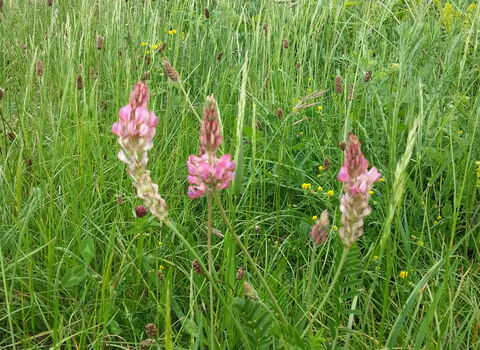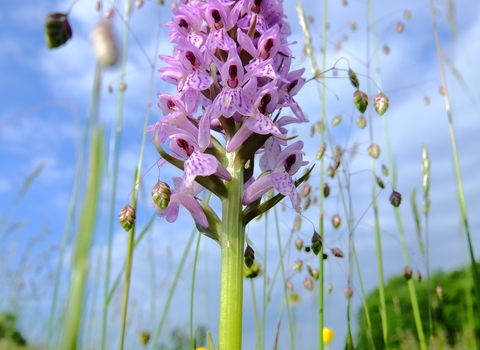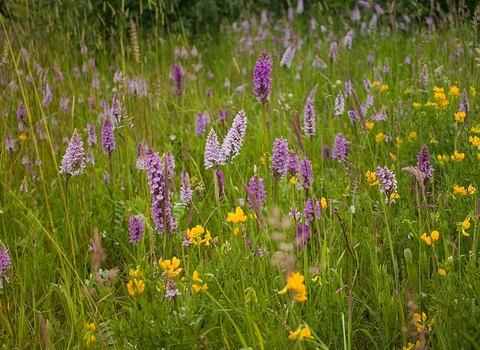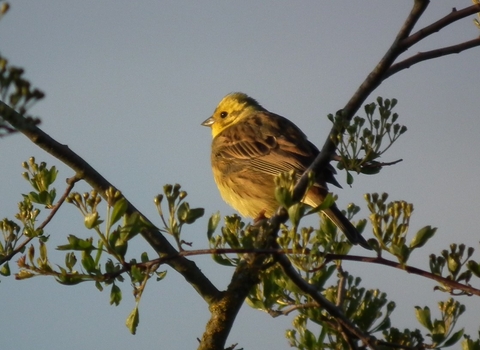Karen McDiarmid
Sherburn Willows Nature Reserve
Location
Know before you go
Dogs
When to visit
Opening times
Open at all timesBest time to visit
May to SeptemberAbout the reserve
The joys of spring
With flower-filled magnesian grasslands sloping steeply down to a wet area of fen and willow carr woodland, Sherburn Willows provides excellent habitats for breeding birds and feeding insects. It comes alive in spring and into summer, when the vivid colours of the grassland change with the months. The flowers are at their best in June and July, but you can enjoy the colours from May to August. Cowslips, oxeye daisy, hairy violet and greater knapweed paint a pretty picture, along with good displays of common spotted- orchids, agrimony, restharrow, and the locally rare sainfoin, with its pointy pink flowers irresistible to pollinating insects. Other locally rare plants recorded here include purple milk-vetch and pale St John’s-wort. There are many butterflies, moths and other insects to look for, including marbled white and orange-tip butterflies as well as elephant hawk-moths.
The birds are back in town
Another welcome sign of spring is the return of migrant songbirds, including whitethroat, lesser whitethroat, chiffchaff, blackcap and reed warbler. Bullfinches are resident on site, and red kites are a common sight overhead, while redwings and fieldfares can be seen during the autumn and winter. We maintain the grassland by removing scrub and grazing with rare breed livestock, and we coppice the willow in the areas of wet woodland to keep the structure varied and rich in wildlife. Rabbits and foxes make their home here, and look out for the distinctive ‘hills’ created by yellow meadow ants!
About
This small nature reserve straddles flower-filled magnesian limestone grassland which runs steeply down a slope to a wet area of fen and willow carr woodland.
In spring and summer the grassland is a carpet of colour, changing with the months; cowslip, ox-eye daisy, hairy violet and common knapweed all bloom. Good shows of common spotted orchid, bee orchid and common twayblade bring colour in midsummer. Other species of note as rare locally, include purple milk vetch, sainfoin and pale St John’s-wort. The wildflowers attract many butterflies, moths and other insects.
Reed warbler, reed bunting and chiffchaff all breed on site. The grassland is being restored by removing scrub and grazing with rare breed white park cattle. In the areas of wet woodland Yorkshire Wildlife Trust coppices the willow to keep it rich in wildlife.
Seasonal highlights
- Spring: Birds - Chiffchaff; Plants - Ox-eye daisy; Cowslip
- Summer: Birds - Whitethroat; Lesser whitethroat; Plants - Sainfoin; Agrimony; Greater knapweed
- Autumn: Birds - Redwing; Fieldfare
- Winter: Birds - Reed bunting
Directions
Public transport
Sherburn in Elmet has a good bus service with a bus stop at the top of New Lane. The train station is 1 ½ miles away.
By car
Sherburn Willows is situated about two miles north-east of the A1-A63 junction and about one mile from the centre of Sherburn in Elmet. Half-a-mile from the traffic lights on Low Street in Sherburn travelling south towards South Milford turn right along New Lane. The reserve is at the end of this road. Park immediately beyond the end of the houses and continue on foot along the farm track. Turn left through the field gate and the reserve is a few yards further on.
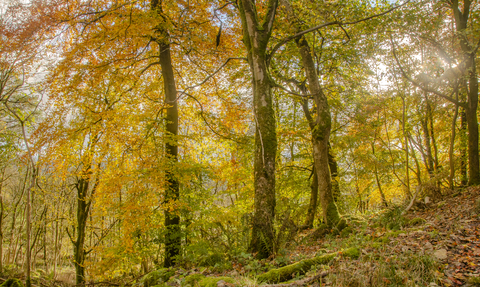
The autumn colours were even more beautiful when the sun came out
Photo Credit - Telling our Story Volunteer, Sara





